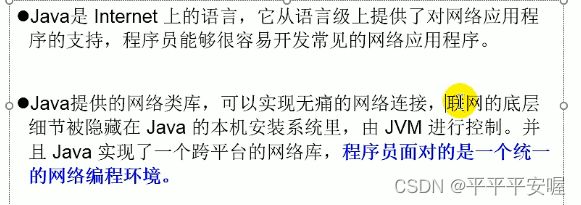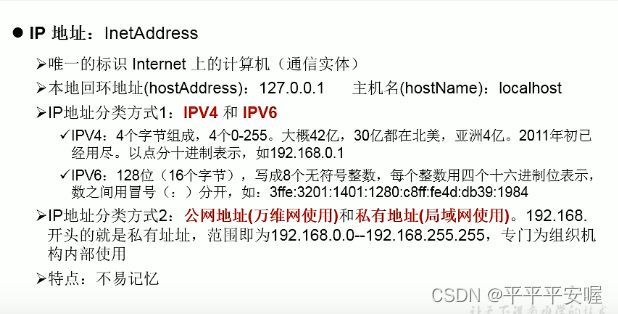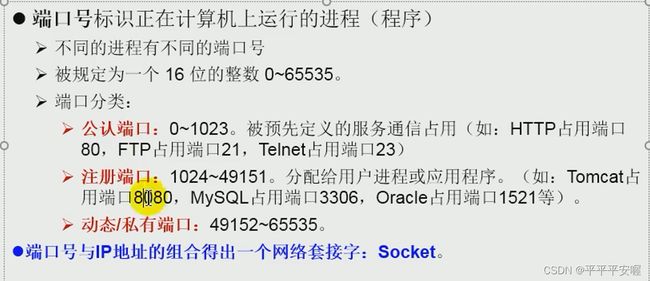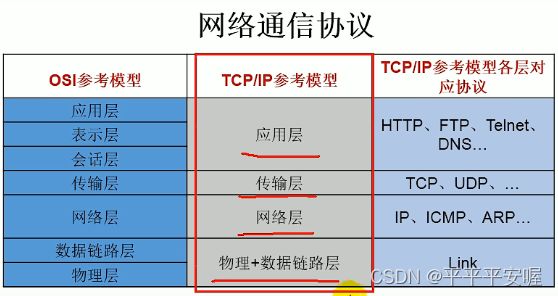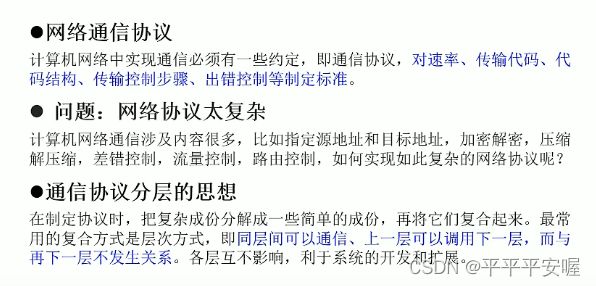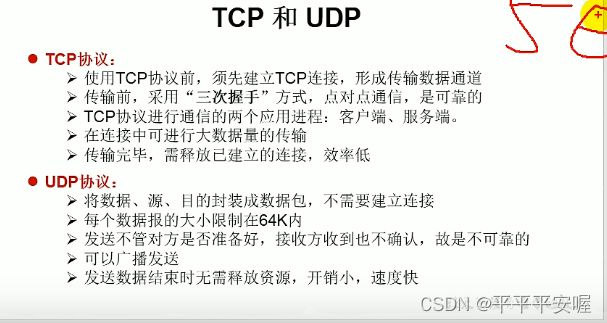- PCDN如何优化移动设备的网络体验
yczykjyxgs
pcdn服务器
在移动互联网时代,用户对网络体验的要求不断提升,PCDN(P2PCDN)技术为优化移动设备网络体验提供了创新解决方案。这项技术通过重构传统内容分发模式,有效解决了移动网络环境下的带宽瓶颈和传输延迟问题。PCDN技术的核心在于构建了一个去中心化的内容分发网络。移动设备不再仅仅作为内容消费者,而是同时承担了内容分发节点的角色。这种设计充分利用了移动设备的闲置带宽和存储资源,形成了一个动态的内容共享网络
- ## PCDN中的网络拥塞控制技术探讨
yczykjyxgs
pcdn网络智能路由器
随着互联网视频流量的爆发式增长,传统CDN面临着成本高、扩展性差等挑战。P2PCDN(PCDN)作为一种新兴的内容分发网络架构,通过利用边缘节点的闲置带宽和存储资源,有效降低了内容分发成本,并提升了网络扩展性。然而,PCDN中节点动态性强、网络环境复杂,传统的网络拥塞控制技术难以直接适用,因此需要针对PCDN的特点设计新的拥塞控制机制。PCDN网络拥塞控制面临的挑战1.节点异构性:PCDN节点性能
- Android开发
哈哈哈隔
android
AndroidAdapter是将数据绑定到UI界面上的桥接类比如:当lambada中只有一个参数时,可以用it指代@Target和@Retention是由Java提供的元注解,所谓元注解就是标记其他注解的注解,下面分别介绍https://blog.csdn.net/javazejian/article/details/71860633#%E5%A3%B0%E6%98%8E%E6%B3%A8%E8%
- 某智慧医养服务平台Uploads存在任意文件上传漏洞(DVB-2025-8968)
Byp0ss403
漏洞复现集合文件上传web安全
免责声明本文所描述的漏洞及其复现步骤仅供网络安全研究与教育目的使用。任何人不得将本文提供的信息用于非法目的或未经授权的系统测试。作者不对任何由于使用本文信息而导致的直接或间接损害承担责任。如涉及侵权,请及时与我们联系,我们将尽快处理并删除相关内容。0x01产品介绍广西金中软件集团有限公司前身成立于1999年,隶属于广西电信下的三产公司金中信息产业有限公司,是一家集软件开发、网站建设、网络工程、系统
- 大整数加、减法(Java实现)与debug找错
gfu_
java算法数据结构
前言这篇文章主要内容涉及大整数加法的实现以及debug使用的简单记录。以前当我碰到程序报错时,总是想找别人帮忙,感觉debug太难了,自己根本看不懂。这次,自己在做一道算法题时,程序能够运行,结果却出错了。本来想找别人帮忙,但想着学习还是要脚踏实地,于是自己硬着头皮上了,先在网上了解如何debug,然后一步一步找到了错误所在。主要是想记录下第一次debug找到问题的快乐。一、大整数加法(java)
- 谷歌准备斥资 230 亿收购网络安全初创公司 Wiz
网络研究观
网络研究观谷歌
Alphabet正在就收购Wiz进行深入谈判,这将显著增强其安全能力。这将是谷歌母公司有史以来最大规模的收购。这是路透社根据匿名消息来源撰写的内容。目标收购金额为230亿美元,即211亿欧元。Wiz拥有实时检测和响应网络威胁的技术。通过实施人工智能,Wiz能够在短时间内吸引许多公司作为客户。Alphabet的收购目标定于2020年初。到2023年,Wiz的收入将达到3.5亿美元。当时,全球40%的
- Java+Selenium+Cucumber自动化测试框架:高效软件测试的利器
测试渣
javaselenium
一、引言在当今软件开发的快速迭代的背景下,确保软件质量和功能的正确性变得愈发关键。自动化测试作为一种提高测试效率、降低成本的有效手段,受到了广泛的关注。Java作为一门功能强大且广泛应用的编程语言,与Selenium和Cucumber相结合的自动化测试框架,为软件测试领域带来了诸多优势。本文将深入探讨这一自动化测试框架,包括其简介、各组件的作用、环境搭建、实际应用案例以及未来发展趋势等内容。二、J
- 使用 Python 的 pyttsx3 库进行文本转语音
Bingjia_Hu
python开发语言pyttsx3
1.什么是pyttsx3?1.1pyttsx3是一个Python库,它可以将文本转换为语音。与其他文本转语音库(如gTTS)不同,pyttsx3不依赖于网络服务,它使用本地的TTS(Text-to-Speech)引擎,这使得它在离线状态下也能正常工作1.2pyttsx3支持多平台(Windows、Linux和macOS),且可以对语音的音量、语速以及语音类型等进行控制2.安装pyttsx3要使用p
- 【从零开始学习计算机科学】信息安全(十三)区块链
贫苦游商
学习区块链hash公有链私有链信息安全网络安全
【从零开始学习计算机科学】信息安全(十三)区块链区块链区块链概述区块链的主要特性开放,共识交易透明,双方匿名不可篡改,可追溯区块链的主要类别公有链私有链联盟链区块链核心技术Hash指针Merkle(梅根)树SPV交易验证过程区块链网络分叉解决机制51%攻击问题基于比特币的区块链的优势与不足常用的区块链区块链区块链概述能否在互联网环境(开放环境)下,创造一种技术,使得在无法保证人们相互信任的前提下,
- 谷歌母公司Alphabet拟斥资230亿美元收购网络安全公司Wiz
leijianping_ce
雷递网乐天7月15日据知情人士透露,谷歌母公司Alphabet正在就收购网络安全初创公司Wiz进行谈判。此次交易总额可能高达230亿美元。这将使其成为Alphabet迄今为止最大的一笔收购。双方尚未达成协议,谈判仍有可能以失败告终。近期,Alphabet搁置收购客户关系管理公司HubSpotInc.的努力,随后进行此次谈判。与HubSpot交易一样,对于像Alphabet这样的大型科技公司来说,收
- 华为余承东“剧透”新形态手机;自DeepSeek发布以来,英伟达市值已蒸发4200亿美元;Java 24正式发布 | 极客头条
极客日报
华为智能手机java
「极客头条」——技术人员的新闻圈!CSDN的读者朋友们好,「极客头条」来啦,快来看今天都有哪些值得我们技术人关注的重要新闻吧。整理|郑丽媛出品|CSDN(ID:CSDNnews)一分钟速览新闻点!华为余承东“揭秘”新形态手机:不是卷轴屏/伸缩屏,但男生女生都会喜欢腾讯去年营收增长8%,马化腾:重组AI团队,增加AI相关的资本开支金山办公:2024年WPSOffice全球月度活跃设备数达6.32亿,
- 都快3202年了,你还不会用Java生成计算机统一标识符
Heping_Ge2333
java
Java生成计算机统一标识符计算机统一标识符的概念什么是计算机统一标识符?计算机统一标识符就相当于每台电脑每个系统的“身份证”。它是唯一的。通常,计算机统一标识符是根据电脑的硬件情况(主板、cpu的序列号,mac地址)和系统情况(windows/linux/unix)生成的。Java语言的实现下面这段代码浅浅的实现了计算机统一标识符importlombok.Data;importlombok.ex
- Java IO流详解
我真的不想做程序员
java文件读写java开发语言后端数据结构算法
目录一、JavaIO流基础(一)字节流常见字节流类(二)字符流常见字符流类二、字节流操作示例(一)读取文件(二)写入文件(三)带缓冲功能的字节流三、字符流操作示例(一)读取文件(二)写入文件(三)带缓冲功能的字符流四、总结一、JavaIO流基础JavaIO流用于处理设备之间的数据传输,主要包括字节流和字符流两大类。字节流以字节为单位进行数据传输,适用于处理二进制数据;字符流以字符为单位进行传输,适
- Optional源码解析和示例解析
飞翔中文网
Java开发语言javajdk
Optional源码解析packagejava.util;importjava.util.function.Consumer;importjava.util.function.Function;importjava.util.function.Predicate;importjava.util.function.Supplier;/***这是一个容器对象,它可能包含一个非空值,也可能不包含。*如果
- 2025React岗位前端面试题180道及其答案解析,看完稳了,万字长文,持续更新....
祈澈菇凉
前端
1.什么是React?它的主要特点是什么?答案解析:React是一个用于构建用户界面的JavaScript库,主要用于构建单页应用。其主要特点包括:组件化:React应用由多个可重用的组件组成,便于管理和维护。虚拟DOM:React使用虚拟DOM提高性能,通过最小化实际DOM操作来优化渲染过程。单向数据流:数据在组件之间以单向流动的方式传递,简化了数据管理和调试。声明式编程:React允许开发者以
- Python前端开发
PITSU
正则表达式htmlcss3mysql
Python前端开发1.前端三剑客(HTML,CSS和JavaScript)1.1HTML1.1.1HTML简介HyperTextMark-upLanguage,指的是超文本标记语言;html是开发网页的语言;html中的标签大多数都是成对出现的,格式:1.1.2HTML结构第一行是文档声明部分HTML:分为页头,页身和页脚。标签大部分是成对出现1.1.3第一行文档声明部分HTML在vscode中
- Ubuntu下编译OpenWrt的详细教程
艾丽丝的爱情
ubuntulinux运维编程
OpenWrt是一个基于Linux的嵌入式操作系统,常用于路由器等网络设备。本文将为您提供在Ubuntu操作系统下编译OpenWrt的完整教程。步骤1:安装必要的软件包首先,我们需要安装一些必要的软件包来支持OpenWrt的编译过程。在终端中运行以下命令来安装这些软件包:sudoaptupdatesudoaptinstallbuild-essentiallibncurses5-devzlib1g-
- java毕业设计,在线水果商城系统
爱编程的小哥
java毕设java课程设计springbootvue
天天生鲜在线商城系统技术解密|SpringBoot+Vue3企业级实战(附高并发场景解决方案)一、系统全景解读该系统是生鲜电商全流程解决方案,采用SpringBoot3+Vue3+ElementPlus技术栈,覆盖商品管理、智能分类、订单处理、用户画像等核心场景,通过RBAC权限控制+OSS图片存储+高并发库存管理三大技术亮点,日均支撑5000+商品、10万+订单的电商需求。系统以蓝白清新界面+实
- Matlab基于BP神经网络与NSGA-II的多目标工艺参数优化方法
天天酷科研
工艺参数优化matlab神经网络工艺参数优化
Matlab基于BP神经网络与NSGA-II的多目标工艺参数优化方法一、方法原理与框架BP神经网络的作用BP神经网络通过建立工艺参数与目标性能(如翘曲变形、收缩率、硬度等)之间的非线性映射关系,作为代理模型替代复杂的物理仿真或实验。其优势在于:能够处理多输入-多输出的复杂非线性关系,例如激光功率、扫描速度与熔覆层性能的关联。在注塑成型中,预测体积收缩率和翘曲变形的相对误差可控制在5%以内。通过正交
- nginx性能优化有哪些方式?
企鹅侠客
linux面试nginx性能优化php
0.运维干货分享软考高级系统架构设计师备考学习资料软考高级网络规划设计师备考学习资料KubernetesCKA认证学习资料分享信息安全管理体系(ISMS)制度模板分享免费文档翻译工具(支持word、pdf、ppt、excel)PuTTY中文版安装包MobaXterm中文版安装包pinginfoview网络诊断工具中文版Nginx是一个高性能的HTTP服务器和反向代理服务器,但在高并发场景下,仍然有
- 使用 TensorFlow 进行图像处理:深度解析卷积神经网络(CNN)
一碗黄焖鸡三碗米饭
人工智能前沿与实践tensorflow图像处理cnn人工智能机器学习pythonai
目录使用TensorFlow进行图像处理:深度解析卷积神经网络(CNN)1.什么是卷积神经网络(CNN)?CNN的基本结构为什么CNN适合图像处理?2.使用TensorFlow构建CNN2.1环境准备2.2加载并预处理MNIST数据集2.3构建CNN模型2.4编译和训练模型2.5评估模型3.CNN的优化与改进3.1使用数据增强3.2调整网络结构4.CNN在其他图像处理任务中的应用5.总结参考文献在
- 多功能电子医药盒设计方案(含有源码)
妄北y
竞赛项目研究实战汇集xcodemacoside
一、设计背景与目的随着科技的迅速发展,数字化和智能化已经成为现代社会的主流趋势。计算机和网络技术的广泛应用正在改变人们的生活方式,尤其是在老龄化社会中,智能化设备的需求日益增长。多功能电子医药盒的设计旨在提高人们的生活效率,尤其是为老年人和忙碌的年轻人提供便利的用药提醒和管理系统。1.设计目的本设计的目标是开发一种多功能语音电子医药盒,能够根据用户的语音指令进行操作,提高用户的用药安全和便捷性。该
- 代理IP防“开盒”?技术人实测后的真相与防护指南
小白iP代理
tcp/ip网络系统安全
近年来“开盒”攻击事件频发,最近更是暴出百度副总裁12岁女儿”开盒“他人。技术人该如何保护隐私?本文从代理IP的原理出发,结合实测数据与攻防案例,分析代理技术的真实作用与局限,并提供一套可落地的防护方案。一、什么是“开盒”攻击?“开盒”(Doxxing)是一种通过技术手段挖掘并公开他人隐私信息的网络暴力行为,常见攻击路径包括:IP追踪:通过社交平台、游戏服务器等获取目标IP地址数据关联:利用社工库
- 【前端网络深潜行者】信息化人员必备知识&面试宝典:TCP连接中断,客户端突然“玩失踪”怎么办?
DTcode7
IT信息技术相关#信息化技能面试宝典HTML5前端javascript前端三大核心JS
【前端网络深潜行者】信息化人员必备知识&面试宝典:TCP连接中断,客户端突然“玩失踪”怎么办?TCP的忠诚卫士:保活与重传保活机制(Keepalive)超时重传与超时前端策略:优雅的应对与重连案例一:心跳检测案例二:断线重连逻辑安全与性能考量实战经验之谈排错思路结语与探讨在网络通信的迷宫中,TCP/IP协议犹如稳固的桥梁,承载着数据的往来。然而,当客户端这个“信使”突然玩起了失踪”,我们如何确保这
- 物联网 - JetLinks与ThingsBoard技术选型对比
天机️灵韵
物联网开源项目物联网
JetLinks与ThingsBoard作为两款主流的开源物联网平台,在技术架构、功能特性及适用场景上存在显著差异。以下从技术选型的关键维度进行深度对比分析:JetLinks与ThingsBoard物联网平台的深度技术对比及选型建议,综合多个维度分析两者的核心差异与适用场景:一、技术架构与性能技术栈JetLinks:基于Java8、SpringBoot2.x、WebFlux、Netty等,采用响应
- 智能护栏报警系统提升高速公路安全
德克西尔DrKsir
智慧护栏安全
在车流如织的高速公路上,金属护栏如同沉默的守护者,时刻准备着在危急时刻力挽狂澜。传统养护人员用脚步丈量护栏安全的日子,正在被一场技术革命悄然改写。一种基于物联网的智能监测系统,正以毫米级感知能力重塑高速公路安全防线。这套智能报警系统的核心,是遍布护栏的"神经元网络"。每隔30米安装的MEMS传感器,能够捕捉到微小的变化。当车辆与护栏发生碰撞,传感器会迅速完成碰撞定位。在浙江某高速路段,这套系统刚投
- 不要再走弯路了2025最全的黑客入门学习路线在这
渗透代老师
学习网络安全web安全网络python
基于入门网络安全/黑客打造的:黑客&网络安全入门&进阶学习资源包在大多数的思维里总觉得[学习]得先收集资料、学习编程、学习计算机基础,这样不是不可以,但是这样学效率太低了!你要知道网络安全是一门技术,任何技术的学习一定是以实践为主的。也就是说很多的理论知识其实是可以在实践中去验证拓展的,这样学习比起你啃原理、啃书本要好理解很多。所以想要学习网络安全选对正确的学习方法很重要,这可以帮你少走很多弯路。
- 202年充电计划——自学手册 网络安全(黑客技术)
网安康sir
web安全安全网络pythonlinux
基于入门网络安全/黑客打造的:黑客&网络安全入门&进阶学习资源包前言什么是网络安全网络安全可以基于攻击和防御视角来分类,我们经常听到的“红队”、“渗透测试”等就是研究攻击技术,而“蓝队”、“安全运营”、“安全运维”则研究防御技术。如何成为一名黑客很多朋友在学习安全方面都会半路转行,因为不知如何去学,在这里,我将这个整份答案分为黑客(网络安全)入门必备、黑客(网络安全)职业指南、黑客(网络安全)学习
- 自学网络安全(黑客技术)2025年 —90天学习计划
网安CILLE
web安全学习安全网络网络安全
基于入门网络安全/黑客打造的:黑客&网络安全入门&进阶学习资源包前言什么是网络安全网络安全可以基于攻击和防御视角来分类,我们经常听到的“红队”、“渗透测试”等就是研究攻击技术,而“蓝队”、“安全运营”、“安全运维”则研究防御技术。如何成为一名黑客很多朋友在学习安全方面都会半路转行,因为不知如何去学,在这里,我将这个整份答案分为黑客(网络安全)入门必备、黑客(网络安全)职业指南、黑客(网络安全)学习
- Wazuh: 一款超强大的威胁预防、检测安全平台!支持虚拟化、容器化和云环境保护
开源项目精选
安全
Wazuh是一个功能强大且高度灵活的开源安全平台,旨在为企业和组织提供全面的威胁预防和检测能力。它集成了多种安全功能,包括入侵检测、漏洞管理、合规性监控等,能够有效地保护企业的网络和系统安全。Stars数11982Forks数1785主要特点多维度威胁检测:Wazuh能够对系统日志、文件完整性、网络流量等多个数据源进行实时监测,及时发现潜在的安全威胁。通过对这些数据源的综合分析,Wazuh可以提供
- VMware Workstation 11 或者 VMware Player 7安装MAC OS X 10.10 Yosemite
iwindyforest
vmwaremac os10.10workstationplayer
最近尝试了下VMware下安装MacOS 系统,
安装过程中发现网上可供参考的文章都是VMware Workstation 10以下, MacOS X 10.9以下的文章,
只能提供大概的思路, 但是实际安装起来由于版本问题, 走了不少弯路, 所以我尝试写以下总结, 希望能给有兴趣安装OSX的人提供一点帮助。
写在前面的话:
其实安装好后发现, 由于我的th
- 关于《基于模型驱动的B/S在线开发平台》源代码开源的疑虑?
deathwknight
JavaScriptjava框架
本人从学习Java开发到现在已有10年整,从一个要自学 java买成javascript的小菜鸟,成长为只会java和javascript语言的老菜鸟(个人邮箱:
[email protected])
一路走来,跌跌撞撞。用自己的三年多业余时间,瞎搞一个小东西(基于模型驱动的B/S在线开发平台,非MVC框架、非代码生成)。希望与大家一起分享,同时有许些疑虑,希望有人可以交流下
平台
- 如何把maven项目转成web项目
Kai_Ge
mavenMyEclipse
创建Web工程,使用eclipse ee创建maven web工程 1.右键项目,选择Project Facets,点击Convert to faceted from 2.更改Dynamic Web Module的Version为2.5.(3.0为Java7的,Tomcat6不支持). 如果提示错误,可能需要在Java Compiler设置Compiler compl
- 主管???
Array_06
工作
转载:http://www.blogjava.net/fastzch/archive/2010/11/25/339054.html
很久以前跟同事参加的培训,同事整理得很详细,必须得转!
前段时间,公司有组织中高阶主管及其培养干部进行了为期三天的管理训练培训。三天的课程下来,虽然内容较多,因对老师三天来的课程内容深有感触,故借着整理学习心得的机会,将三天来的培训课程做了一个
- python内置函数大全
2002wmj
python
最近一直在看python的document,打算在基础方面重点看一下python的keyword、Build-in Function、Build-in Constants、Build-in Types、Build-in Exception这四个方面,其实在看的时候发现整个《The Python Standard Library》章节都是很不错的,其中描述了很多不错的主题。先把Build-in Fu
- JSP页面通过JQUERY合并行
357029540
JavaScriptjquery
在写程序的过程中我们难免会遇到在页面上合并单元行的情况,如图所示
如果对于会的同学可能很简单,但是对没有思路的同学来说还是比较麻烦的,提供一下用JQUERY实现的参考代码
function mergeCell(){
var trs = $("#table tr");
&nb
- Java基础
冰天百华
java基础
学习函数式编程
package base;
import java.text.DecimalFormat;
public class Main {
public static void main(String[] args) {
// Integer a = 4;
// Double aa = (double)a / 100000;
// Decimal
- unix时间戳相互转换
adminjun
转换unix时间戳
如何在不同编程语言中获取现在的Unix时间戳(Unix timestamp)? Java time JavaScript Math.round(new Date().getTime()/1000)
getTime()返回数值的单位是毫秒 Microsoft .NET / C# epoch = (DateTime.Now.ToUniversalTime().Ticks - 62135
- 作为一个合格程序员该做的事
aijuans
程序员
作为一个合格程序员每天该做的事 1、总结自己一天任务的完成情况 最好的方式是写工作日志,把自己今天完成了什么事情,遇见了什么问题都记录下来,日后翻看好处多多
2、考虑自己明天应该做的主要工作 把明天要做的事情列出来,并按照优先级排列,第二天应该把自己效率最高的时间分配给最重要的工作
3、考虑自己一天工作中失误的地方,并想出避免下一次再犯的方法 出错不要紧,最重
- 由html5视频播放引发的总结
ayaoxinchao
html5视频video
前言
项目中存在视频播放的功能,前期设计是以flash播放器播放视频的。但是现在由于需要兼容苹果的设备,必须采用html5的方式来播放视频。我就出于兴趣对html5播放视频做了简单的了解,不了解不知道,水真是很深。本文所记录的知识一些浅尝辄止的知识,说起来很惭愧。
视频结构
本该直接介绍html5的<video>的,但鉴于本人对视频
- 解决httpclient访问自签名https报javax.net.ssl.SSLHandshakeException: sun.security.validat
bewithme
httpclient
如果你构建了一个https协议的站点,而此站点的安全证书并不是合法的第三方证书颁发机构所签发,那么你用httpclient去访问此站点会报如下错误
javax.net.ssl.SSLHandshakeException: sun.security.validator.ValidatorException: PKIX path bu
- Jedis连接池的入门级使用
bijian1013
redisredis数据库jedis
Jedis连接池操作步骤如下:
a.获取Jedis实例需要从JedisPool中获取;
b.用完Jedis实例需要返还给JedisPool;
c.如果Jedis在使用过程中出错,则也需要还给JedisPool;
packag
- 变与不变
bingyingao
不变变亲情永恒
变与不变
周末骑车转到了五年前租住的小区,曾经最爱吃的西北面馆、江西水饺、手工拉面早已不在,
各种店铺都换了好几茬,这些是变的。
三年前还很流行的一款手机在今天看起来已经落后的不像样子。
三年前还运行的好好的一家公司,今天也已经不复存在。
一座座高楼拔地而起,
- 【Scala十】Scala核心四:集合框架之List
bit1129
scala
Spark的RDD作为一个分布式不可变的数据集合,它提供的转换操作,很多是借鉴于Scala的集合框架提供的一些函数,因此,有必要对Scala的集合进行详细的了解
1. 泛型集合都是协变的,对于List而言,如果B是A的子类,那么List[B]也是List[A]的子类,即可以把List[B]的实例赋值给List[A]变量
2. 给变量赋值(注意val关键字,a,b
- Nested Functions in C
bookjovi
cclosure
Nested Functions 又称closure,属于functional language中的概念,一直以为C中是不支持closure的,现在看来我错了,不过C标准中是不支持的,而GCC支持。
既然GCC支持了closure,那么 lexical scoping自然也支持了,同时在C中label也是可以在nested functions中自由跳转的
- Java-Collections Framework学习与总结-WeakHashMap
BrokenDreams
Collections
总结这个类之前,首先看一下Java引用的相关知识。Java的引用分为四种:强引用、软引用、弱引用和虚引用。
强引用:就是常见的代码中的引用,如Object o = new Object();存在强引用的对象不会被垃圾收集
- 读《研磨设计模式》-代码笔记-解释器模式-Interpret
bylijinnan
java设计模式
声明: 本文只为方便我个人查阅和理解,详细的分析以及源代码请移步 原作者的博客http://chjavach.iteye.com/
package design.pattern;
/*
* 解释器(Interpreter)模式的意图是可以按照自己定义的组合规则集合来组合可执行对象
*
* 代码示例实现XML里面1.读取单个元素的值 2.读取单个属性的值
* 多
- After Effects操作&快捷键
cherishLC
After Effects
1、快捷键官方文档
中文版:https://helpx.adobe.com/cn/after-effects/using/keyboard-shortcuts-reference.html
英文版:https://helpx.adobe.com/after-effects/using/keyboard-shortcuts-reference.html
2、常用快捷键
- Maven 常用命令
crabdave
maven
Maven 常用命令
mvn archetype:generate
mvn install
mvn clean
mvn clean complie
mvn clean test
mvn clean install
mvn clean package
mvn test
mvn package
mvn site
mvn dependency:res
- shell bad substitution
daizj
shell脚本
#!/bin/sh
/data/script/common/run_cmd.exp 192.168.13.168 "impala-shell -islave4 -q 'insert OVERWRITE table imeis.${tableName} select ${selectFields}, ds, fnv_hash(concat(cast(ds as string), im
- Java SE 第二讲(原生数据类型 Primitive Data Type)
dcj3sjt126com
java
Java SE 第二讲:
1. Windows: notepad, editplus, ultraedit, gvim
Linux: vi, vim, gedit
2. Java 中的数据类型分为两大类:
1)原生数据类型 (Primitive Data Type)
2)引用类型(对象类型) (R
- CGridView中实现批量删除
dcj3sjt126com
PHPyii
1,CGridView中的columns添加
array(
'selectableRows' => 2,
'footer' => '<button type="button" onclick="GetCheckbox();" style=&
- Java中泛型的各种使用
dyy_gusi
java泛型
Java中的泛型的使用:1.普通的泛型使用
在使用类的时候后面的<>中的类型就是我们确定的类型。
public class MyClass1<T> {//此处定义的泛型是T
private T var;
public T getVar() {
return var;
}
public void setVa
- Web开发技术十年发展历程
gcq511120594
Web浏览器数据挖掘
回顾web开发技术这十年发展历程:
Ajax
03年的时候我上六年级,那时候网吧刚在小县城的角落萌生。传奇,大话西游第一代网游一时风靡。我抱着试一试的心态给了网吧老板两块钱想申请个号玩玩,然后接下来的一个小时我一直在,注,册,账,号。
彼时网吧用的512k的带宽,注册的时候,填了一堆信息,提交,页面跳转,嘣,”您填写的信息有误,请重填”。然后跳转回注册页面,以此循环。我现在时常想,如果当时a
- openSession()与getCurrentSession()区别:
hetongfei
javaDAOHibernate
来自 http://blog.csdn.net/dy511/article/details/6166134
1.getCurrentSession创建的session会和绑定到当前线程,而openSession不会。
2. getCurrentSession创建的线程会在事务回滚或事物提交后自动关闭,而openSession必须手动关闭。
这里getCurrentSession本地事务(本地
- 第一章 安装Nginx+Lua开发环境
jinnianshilongnian
nginxluaopenresty
首先我们选择使用OpenResty,其是由Nginx核心加很多第三方模块组成,其最大的亮点是默认集成了Lua开发环境,使得Nginx可以作为一个Web Server使用。借助于Nginx的事件驱动模型和非阻塞IO,可以实现高性能的Web应用程序。而且OpenResty提供了大量组件如Mysql、Redis、Memcached等等,使在Nginx上开发Web应用更方便更简单。目前在京东如实时价格、秒
- HSQLDB In-Process方式访问内存数据库
liyonghui160com
HSQLDB一大特色就是能够在内存中建立数据库,当然它也能将这些内存数据库保存到文件中以便实现真正的持久化。
先睹为快!
下面是一个In-Process方式访问内存数据库的代码示例:
下面代码需要引入hsqldb.jar包 (hsqldb-2.2.8)
import java.s
- Java线程的5个使用技巧
pda158
java数据结构
Java线程有哪些不太为人所知的技巧与用法? 萝卜白菜各有所爱。像我就喜欢Java。学无止境,这也是我喜欢它的一个原因。日常
工作中你所用到的工具,通常都有些你从来没有了解过的东西,比方说某个方法或者是一些有趣的用法。比如说线程。没错,就是线程。或者确切说是Thread这个类。当我们在构建高可扩展性系统的时候,通常会面临各种各样的并发编程的问题,不过我们现在所要讲的可能会略有不同。
- 开发资源大整合:编程语言篇——JavaScript(1)
shoothao
JavaScript
概述:本系列的资源整合来自于github中各个领域的大牛,来收藏你感兴趣的东西吧。
程序包管理器
管理javascript库并提供对这些库的快速使用与打包的服务。
Bower - 用于web的程序包管理。
component - 用于客户端的程序包管理,构建更好的web应用程序。
spm - 全新的静态的文件包管
- 避免使用终结函数
vahoa.ma
javajvmC++
终结函数(finalizer)通常是不可预测的,常常也是很危险的,一般情况下不是必要的。使用终结函数会导致不稳定的行为、更差的性能,以及带来移植性问题。不要把终结函数当做C++中的析构函数(destructors)的对应物。
我自己总结了一下这一条的综合性结论是这样的:
1)在涉及使用资源,使用完毕后要释放资源的情形下,首先要用一个显示的方
